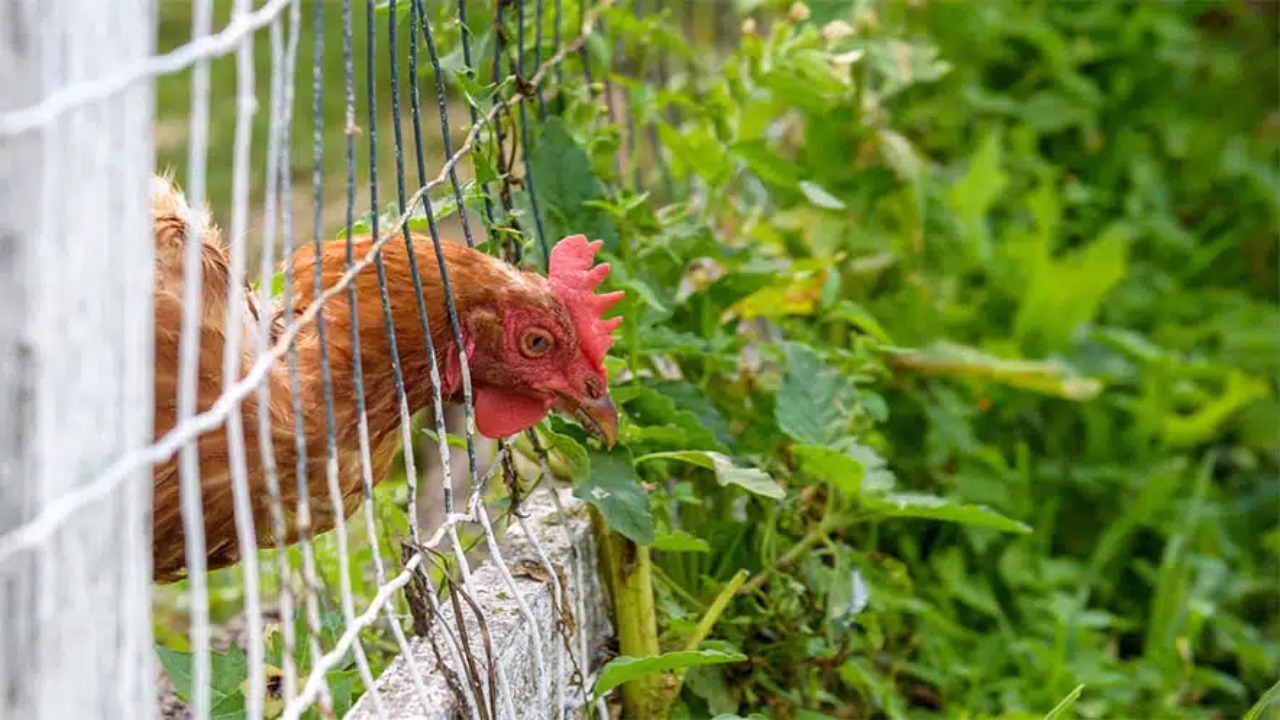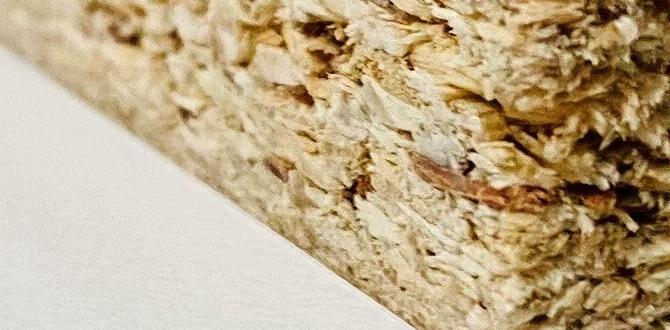Chickens are one of the most commonly raised animals in the world, with billions of them being raised for their meat and eggs every year.
However, as society becomes more environmentally conscious, there has been a growing interest in sustainable farming practices. One of these practices is the concept of raising chickens in a greenhouse, which has gained popularity in recent years.
This unique method allows for a symbiotic relationship between the chickens and the greenhouse, creating a self-sustaining ecosystem. But how exactly can chickens thrive in a greenhouse environment?
Here, we will explore how can chickens live in a greenhouse, as well as the necessary steps to create a successful and sustainable setup. From providing a comfortable living space for the chickens to utilizing their waste as fertilizer for plants, we will delve into the intricacies of this innovative farming technique.
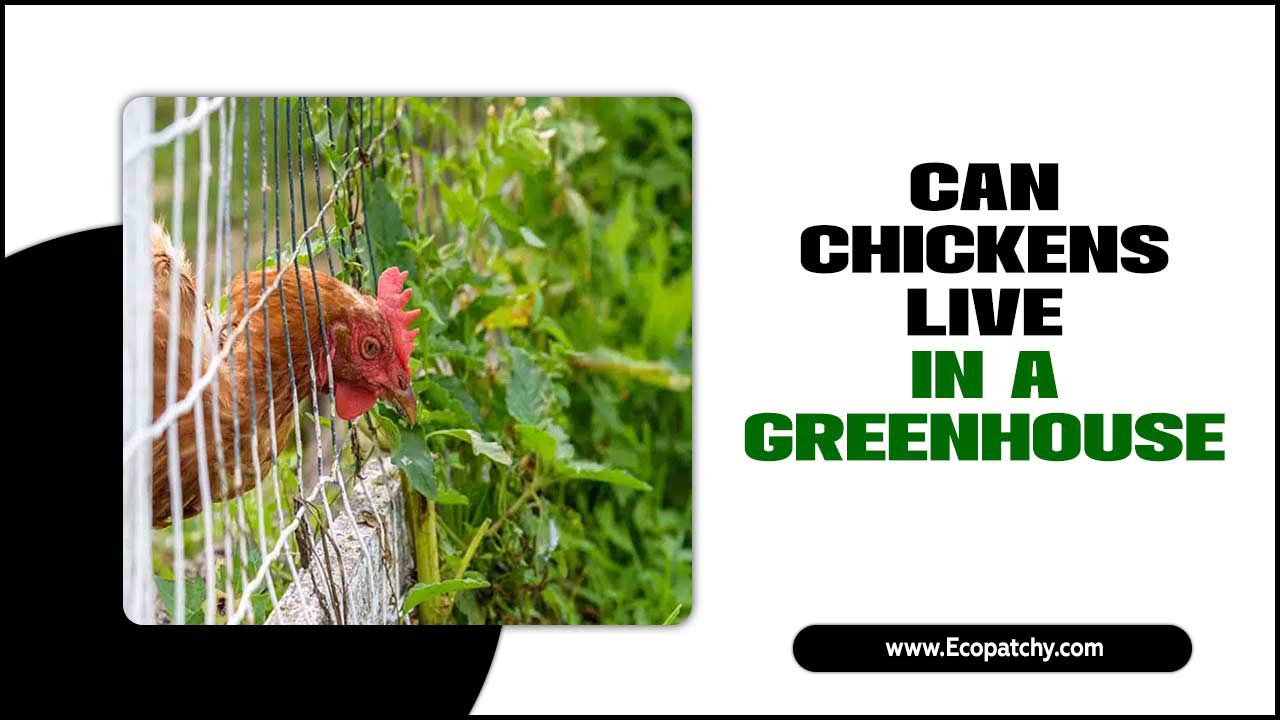
Understanding The Needs Of Chickens
In order to ensure the welfare and optimal health of chickens, it is imperative to have a comprehensive understanding of their needs. Chickens, domesticated from their wild ancestors, have specific requirements that must be met to ensure their well-being in various settings, such as backyard flocks or commercial operations.
The needs of chickens are essential for their well-being and productivity. When chickens live in a greenhouse, there are several key factors to consider:
- Shelter: Chickens require a well-structured and secure shelter within the greenhouse. This shelter should protect them from extreme weather conditions and predators and provide a comfortable environment for roosting and nesting.
- Ventilation: Adequate ventilation is crucial in a greenhouse setting to maintain proper air circulation. Good ventilation helps regulate temperature and humidity levels, preventing respiratory issues and ensuring overall comfort for the chickens.
- Lighting: Chickens need a consistent lighting schedule to promote healthy growth and egg production. Greenhouse owners can supplement natural sunlight with artificial lighting to ensure that plants receive the required amount of light each day.
- Space: Sufficient space is vital for chickens to move around freely and engage in natural behaviors such as scratching, perching, and dust bathing. You should appropriately size the greenhouse to accommodate the number of chickens and allow.
How Can Chickens Live In A Greenhouse? – Full Discussion
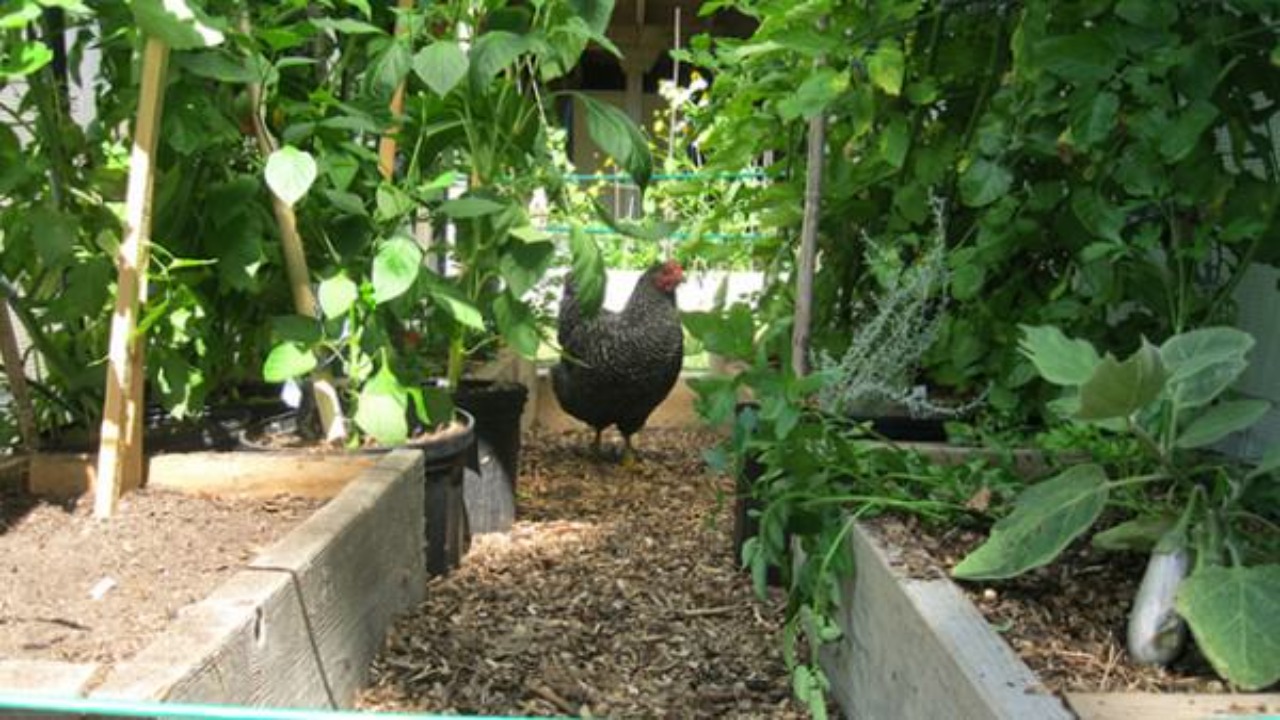
Here is are discussion on how can chickens live in a greenhouse. Chickens can indeed live in a greenhouse as long as certain conditions are met. Greenhouses provide a controlled environment that can be beneficial for chickens. The greenhouse should be well-ventilated to ensure proper air circulation and prevent the buildup of ammonia from chicken waste.
This can be achieved by installing windows or vents that can be opened and closed as needed. Proper insulation is crucial to maintain a stable temperature inside the greenhouse, as chickens are sensitive to extreme heat and cold.
Adequate insulation materials, such as foam or reflective panels, can help regulate the temperature. Additionally, chickens need access to natural light, so the greenhouse should have transparent or translucent roofing materials that allow sunlight to enter. Providing ample space for the chickens to roam and engage in natural behaviors is important. This can be achieved by setting up perches, nesting boxes, and even a designated area for dust bathing.
Designing The Ideal Greenhouse For Chickens
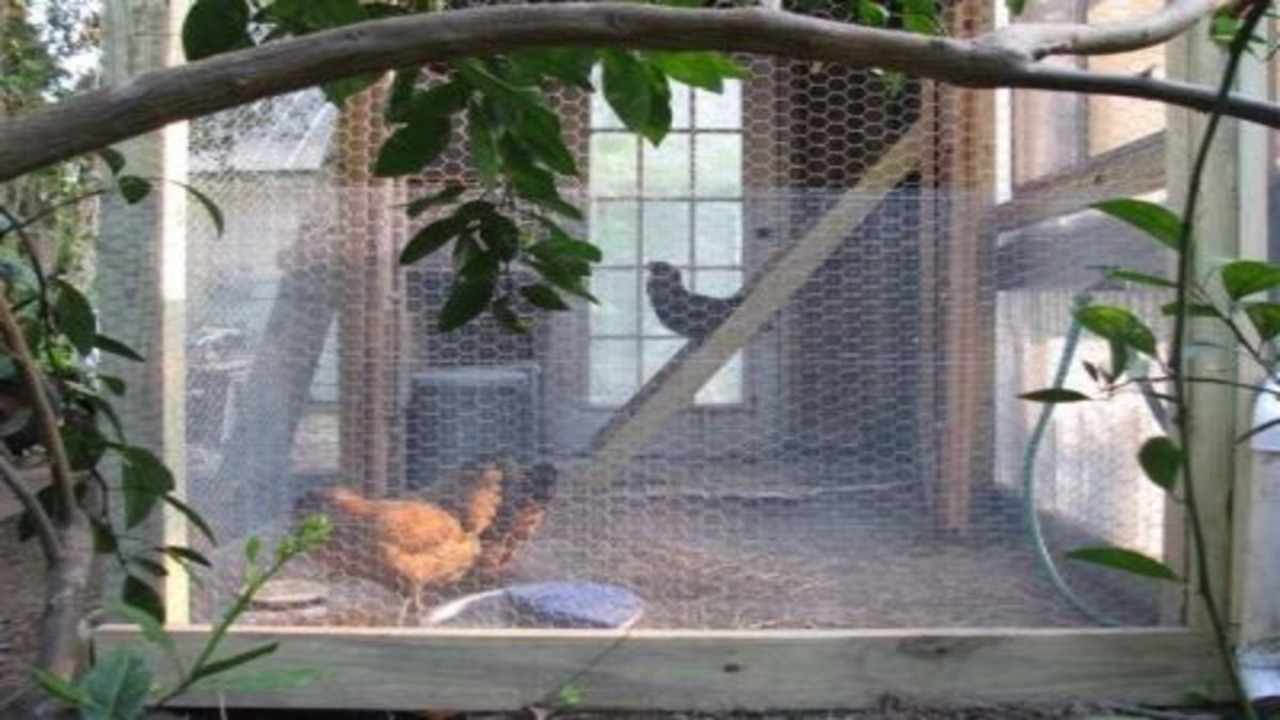
Designing the ideal greenhouse for chickens requires careful consideration of various factors to ensure the highest standards of sustainability and animal welfare. Greenhouses provide a controlled environment that can optimize conditions for chicken rearing, promoting their health and productivity while minimizing negative environmental impacts.
Designing the Ideal Greenhouse for Chickens. Designing a greenhouse for chickens, there are several factors to consider in order to create an ideal environment for these feathered friends. Here is some information to help you in designing the perfect greenhouse for your chickens:
- The size of the greenhouse will depend on the number of chickens you intend to house. It should provide enough space for the chickens to move around comfortably, with adequate roosting and nesting areas. A good rule of thumb is to allow at least 4 square feet per chicken.
- Proper ventilation is crucial to maintain air quality and control temperature inside the greenhouse. Provide windows, vents, or fans to allow for fresh air circulation and prevent overheating. This will also help reduce humidity and prevent the buildup of ammonia from chicken waste.
- Chickens need natural light for their well-being and egg production. Incorporate windows or clear panels in the greenhouse design.
Managing Temperature And Ventilation
Managing temperature and ventilation is a crucial aspect in various settings, such as residential buildings, commercial spaces, and industrial facilities. Effectively controlling temperature and ventilation is essential for maintaining comfort, ensuring adequate air quality, and optimizing energy efficiency.
Designing a greenhouse for chickens, there are several factors to consider in order to create an ideal environment for these feathered friends. Here is some information to help you in designing the perfect greenhouse for your chickens:
- The size of the greenhouse will depend on the number of chickens you intend to house. It should provide enough space for the chickens to move around comfortably, with adequate roosting and nesting areas. A good rule of thumb is to allow at least 4 square feet per chicken.
- Proper ventilation is crucial to maintain air quality and control temperature inside the greenhouse. Provide windows, vents, or fans to allow for fresh air circulation and prevent overheating. This will also help reduce humidity and prevent the buildup of ammonia from chicken waste.
- Chickens need natural light for their well-being and egg production. Incorporate windows or clear panels in the greenhouse design.
Providing Adequate Lighting
essential for chickens living in a greenhouse. Since a greenhouse is primarily designed to optimize plant growth, it may not naturally provide enough light for the chickens. To ensure their well-being, you can install artificial lighting to supplement the natural light.
This will help regulate their biological clock and promote healthy growth. Moreover, the lighting system should mimic the natural day-night cycle to give the chickens a sense of routine and stability. By carefully managing the lighting conditions, chickens can thrive in a greenhouse environment.
Creating A Suitable Roosting And Nesting Area
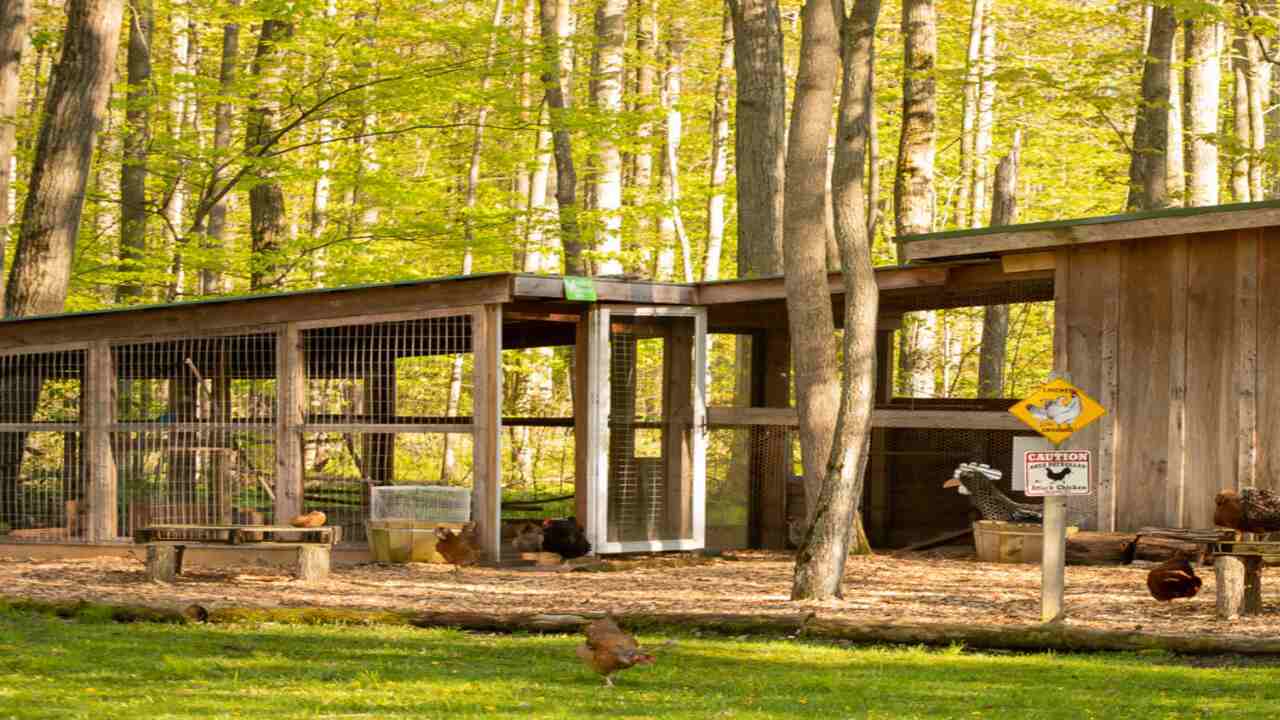
Creating a suitable roosting and nesting area is of paramount importance when it comes to promoting the welfare and conservation of avian species. Providing adequate shelter and nesting sites not only ensures the survival and breeding success of birds but also contributes to the overall biodiversity of an ecosystem.
When designing and implementing a roosting and nesting area, several key factors must be considered. Creating a Suitable Roosting and Nesting Area for Chickens in a Greenhouse
- Choose The Right Location: Select a suitable area within the greenhouse that provides enough space for the chickens to roost and nest comfortably. Ensure that you ventilate the area well and provide adequate natural light.
- Install Roosting Bars: Chickens prefer to roost off the ground, so install sturdy roosting bars at a height that allows them to perch comfortably. Use materials such as wooden dowels or metal poles, ensuring they are securely attached to the greenhouse structure.
- Provide Nesting Boxes: Chickens need a cozy and private space to lay their eggs. Install nesting boxes within the greenhouse using materials like wooden crates or plastic containers. Ensure you fill the nesting boxes with clean bedding, such as straw or wood shavings.
- Maintain Cleanliness: Regularly clean and replace the bedding in the nesting boxes to ensure a hygienic environment for your chickens.
Feeding And Watering Systems
In order for chickens to live in a greenhouse, it is important to establish appropriate feeding and watering systems. Chickens require a balanced diet that consists of grains, vegetables, and proteins. By utilizing the greenhouse environment, it becomes easier to grow and harvest these essential food sources.
The controlled climate and abundant natural sunlight within the greenhouse not only promote the growth of crops but also provide an ideal condition for the chickens to forage and peck on fresh produce.
Additionally, installing automatic watering systems ensures that the chickens have a constant supply of clean water, which is vital for their overall health and well-being. These systems can be programmed to provide water at specific intervals, ensuring that the chickens are always well-hydrated. With proper feeding and watering systems.
Managing Waste And Odor Control
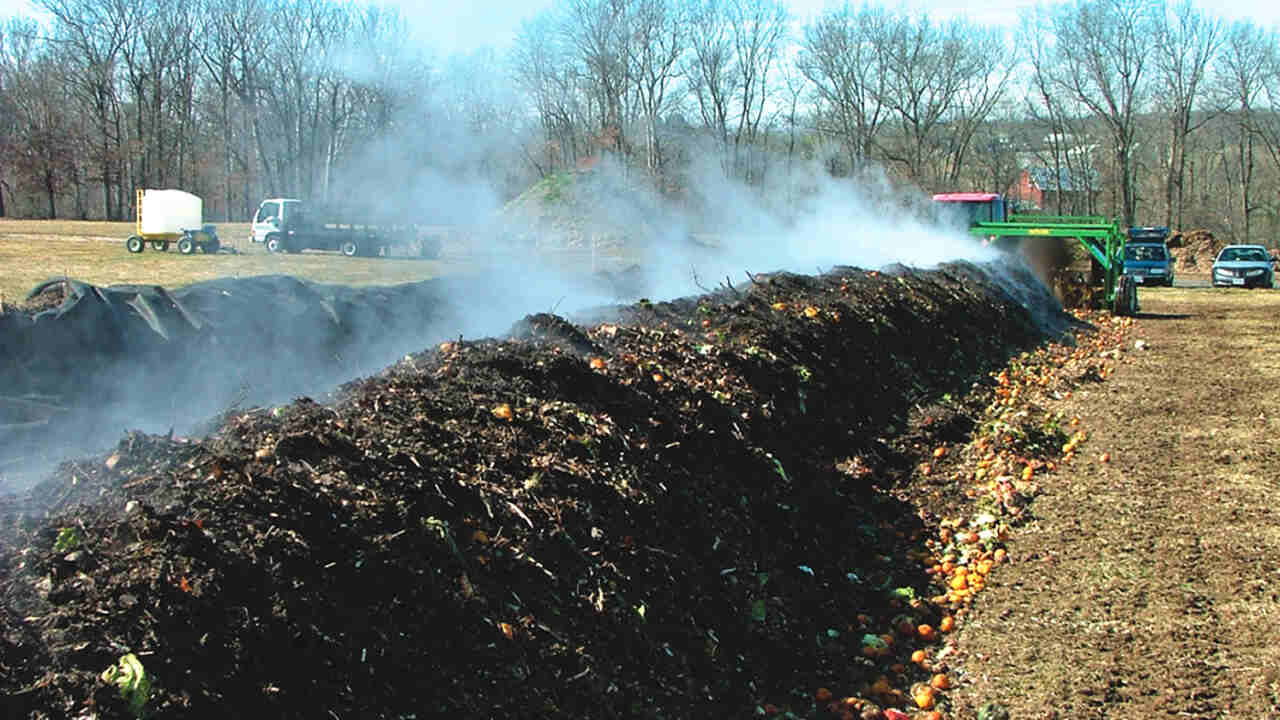
Managing waste and odor control is crucial to maintaining a clean and healthy environment. In order to effectively manage waste, it is important to implement proper waste disposal systems and procedures. This includes segregating different types of waste to facilitate recycling and ensuring that hazardous materials are disposed of safely.
Waste management also involves regular collection and transportation of waste to the designated disposal sites. Managing waste and odor control is important when chickens live in a greenhouse. Here are some tips:
- Proper Waste Management: Regularly clean the chicken coop to remove accumulated waste. Use a deep litter system or composting method to manage waste effectively.
- Composting: Implement a composting system for chicken manure and other organic waste. This can help reduce odor and provide nutrient-rich compost for your garden or plants.
- Ventilation: Ensure proper ventilation in the greenhouse to minimize odor buildup. Good air circulation helps control moisture levels and prevents the buildup of ammonia and other gases.
- Absorbent Materials: Use absorbent materials like straw, wood shavings, or sawdust on the coop floor to help absorb moisture and control odor. Replace them regularly to maintain a clean and fresh environment.
- Regular Cleaning: Clean the coop and remove waste on a regular basis. This helps prevent the buildup of odors and keeps the greenhouse environment healthier for the chickens.
Maintaining Health And Hygiene In The Greenhouse
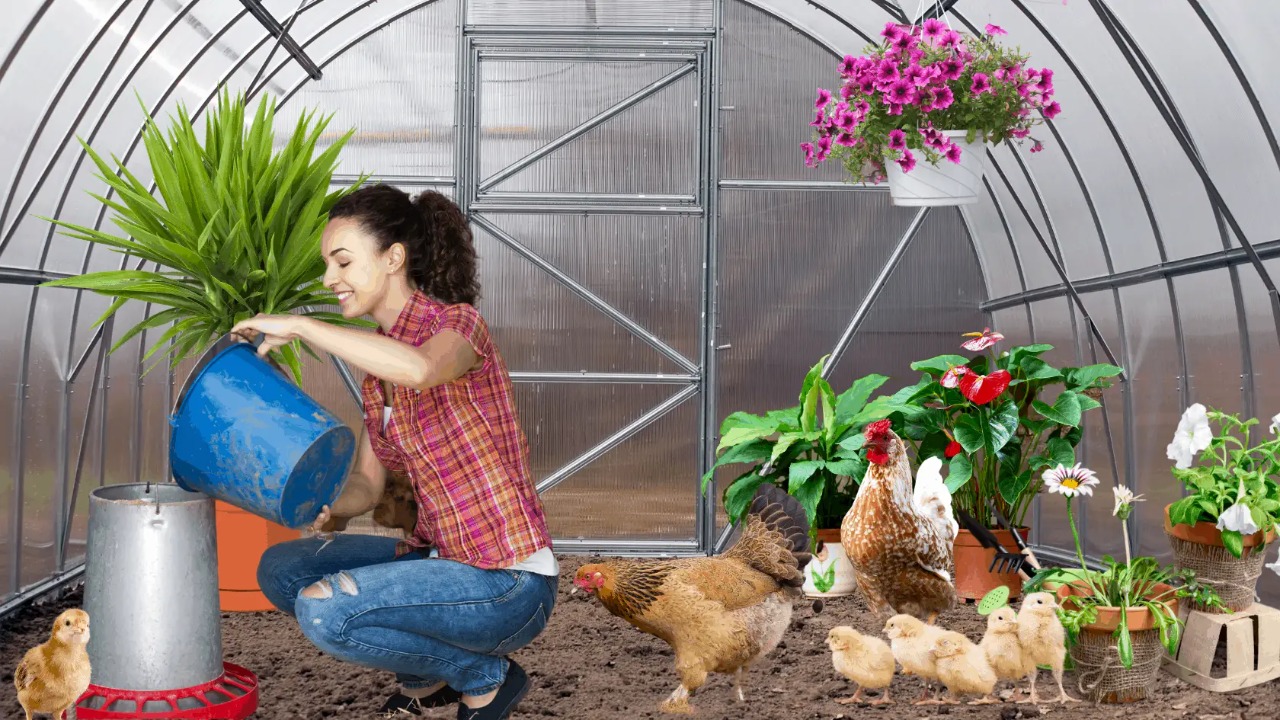
Maintaining health and hygiene in the greenhouse is of utmost importance in ensuring optimal growth and productivity of plants, as well as the overall safety of workers and visitors. When chickens live in a greenhouse, it is important to ensure their health and hygiene to promote their well-being and prevent the spread of diseases. Here are some tips for maintaining health and hygiene in a greenhouse:
- Regularly clean the greenhouse to remove any faeces, feathers, or food scraps. This will help prevent the buildup of bacteria and pathogens.
- Proper ventilation is essential to maintain fresh air circulation in the greenhouse. Ensure that there is adequate airflow to prevent the accumulation of ammonia and moisture, which can lead to respiratory issues for the chickens.
- Monitor and regulate the temperature inside the greenhouse to ensure it remains within a comfortable range for the chickens. Extreme heat or cold can negatively affect their health.
- Implement measures to control pests such as rats, mice, and insects. These pests can carry diseases and pose a threat to the health of the chickens.
Integrating Chickens With Greenhouse Plants
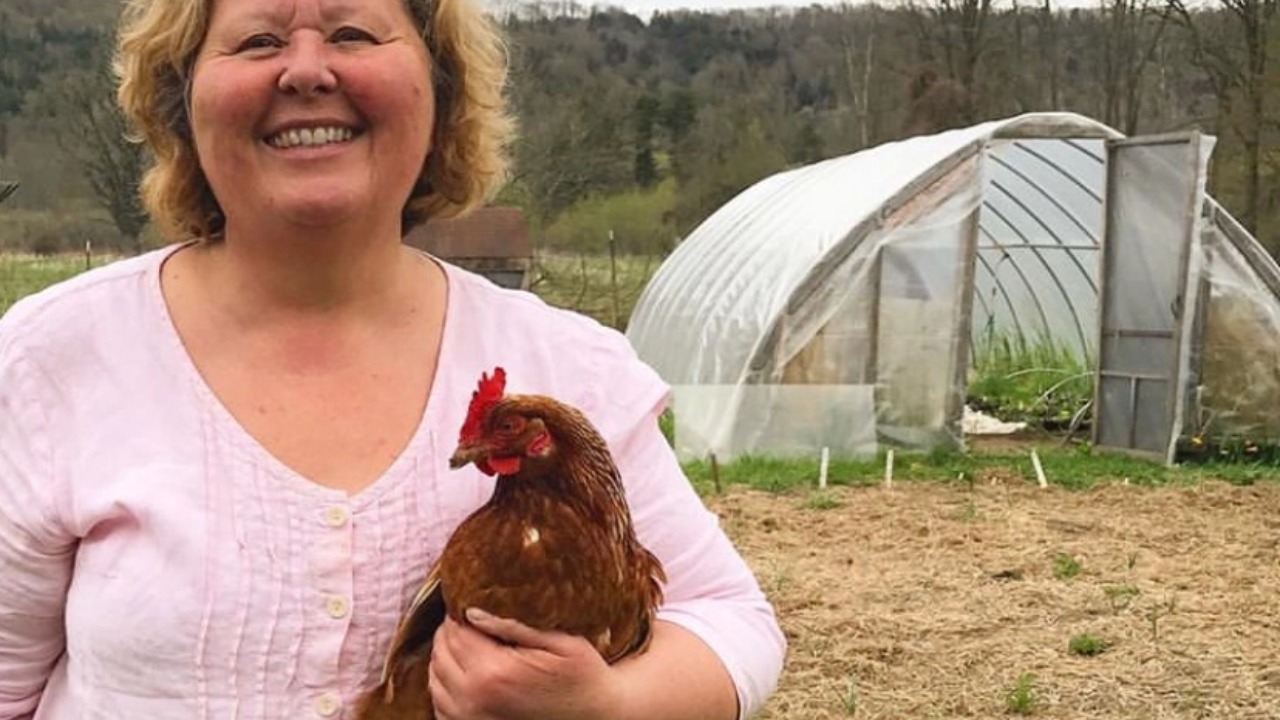
Integrating chickens with greenhouse plants is a sustainable and beneficial practice that can enhance the environment and the productivity of the greenhouse. When chickens are allowed to live in a greenhouse, they provide a range of benefits, such as pest control, nutrient cycling, and soil improvement.
Chickens can help control pests in the greenhouse by consuming insects, slugs, and other small organisms that may harm the plants. This can reduce the need for chemical pesticides and promote natural pest management.
Additionally, chickens produce manure, which is rich in nutrients. As they roam freely in the greenhouse, their droppings enrich the soil, providing essential nitrogen, phosphorus, and potassium for the plants. This natural fertilization can enhance plant growth and yield.
Moreover, chickens help improve soil structure through scratching and pecking. Their constant movement helps aerate the soil, allowing better water infiltration and root development for the greenhouse plants.
Conclusion
Here is our discussion of how can chickens live in a greenhouse. The concept of keeping chickens in a greenhouse may seem unconventional, but it has proven to be a successful and sustainable method for many farmers and homesteaders.
The chickens provide valuable nutrients to the soil, which in turn helps to grow healthier and more abundant crops. Additionally, their presence in the greenhouse can help with pest control and weed management.
While proper planning and care must be taken to ensure the safety and well-being of both the chickens and the plants, the benefits of this integrated system make it a viable and environmentally friendly option for those looking to raise chickens and grow crops in a sustainable manner. Further research and experimentation in this area can lead to even more innovative and efficient ways of utilizing the symbiotic relationship between chickens and greenhouses.
FAQ
1.What Is The Purpose Of Having Chickens In A Greenhouse?
Ans: Having chickens in a greenhouse serves multiple purposes. Chickens help to control pests such as insects and slugs, which can damage plants in the greenhouse. They also eat weed seeds, therefore reducing the need for herbicides.
2.What Type Of Bedding Should Be Used In A Greenhouse Chicken Coop?
Ans: The best type of bedding to use in a greenhouse chicken coop is straw or pine shavings. These materials are absorbent, provide insulation, and are easy to clean. Avoid using materials like hay, as it can mold and attract pests.
3.How Can Chickens Help With Pest Control In A Greenhouse?
Ans: Chickens can help with pest control in a greenhouse by eating insects and pests that may harm the plants. They can also scratch and dig in the soil, which helps to break up pest habitats and disrupt their life cycle.
4.Can Chickens Survive Solely On Plants In A Greenhouse?
Ans: No, chickens cannot survive solely on plants in a greenhouse. While plants provide some nutrients, chickens require a balanced diet that includes a variety of foods, including grains, insects, and protein-rich sources.
5.What Should Be Considered When Designing A Greenhouse For Chickens?
Ans: When designing a greenhouse for chickens, several factors should be considered. The size of the greenhouse should be appropriate to accommodate the number of chickens and allow for their movement. Good ventilation is crucial to maintain air quality and prevent overheating.

